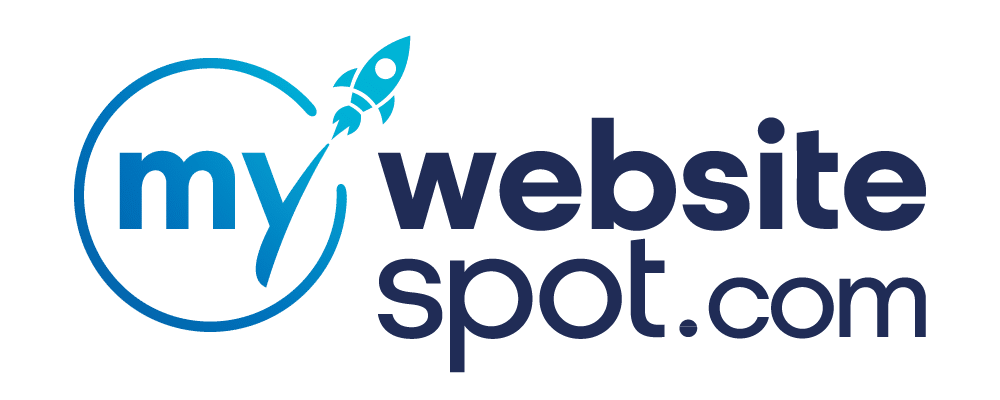In project management, efficiency, productivity, and successful project completion are paramount. For project managers seeking to optimize their project progression while saving time and money, two prominent methodologies stand out:
Agile and Scrum.
These methodologies have gained immense popularity for their ability to adapt to the dynamic nature of modern projects. In this article, we will delve deep into the differences between Agile and Scrum, exploring their usage, advantages, disadvantages, and when each method is best applied.
Agile and Scrum In a Nutshell
Choosing the right methodology is crucial to maximize efficiency, productivity, and project completion. Agile and Scrum offer two distinct but related approaches to achieving these goals.
Agile, values individuals and interactions, working software, customer collaboration, and responding to change. It provides a versatile framework adaptable to various project types and fosters a dynamic environment where creativity and adaptability thrive.
Scrum, on the other hand, is a structured framework, emphasizing empirical process control, self-organization, collaboration, value-based priorities, timeboxing, and continuous improvement. It excels in software development projects where a well-defined process and iterative development are essential.
Ultimately, the choice between Agile and Scrum depends on your project’s specific needs and requirements. Whether you opt for the flexibility of Agile or the structure of Scrum, both methodologies offer valuable tools for enhancing project management efficiency.

Agile Methodology: A Framework for Flexibility
Agile is a methodology that was originally designed for managing software projects.
Its core philosophy centers on the belief that software can be delivered quickly and iterated upon continuously. Unlike traditional project management approaches, Agile views gaps and errors as opportunities for learning rather than failures.
A Brief History of Agile Project Management
In project management, Agile emerged as a transformative approach in 2001. Its inception can be attributed to a visionary group of software development leaders who set out to tackle a pervasive challenge within the industry – the perpetual struggle to balance time, budget, and project requirements.
Prior to Agile’s emergence, the predominant model in use was the Waterfall model.
In the Waterfall approach, businesses would furnish their development teams with intricate and extensive requirements, demanding that all facets of the project be delivered on time and within the predefined budget.
This left, time, scope, and budget rigid, leaving little room for maneuvering.
Agile, however, presented a radical departure from this traditional model. It posited that a more realistic and effective project plan could be established by allowing one of these elements to be flexible.
Typically, in Agile, it is the scope that remains adaptable. Collaboratively, a Product Owner, representing the business side, partners with the development team to discern the feasible scope to be accomplished within a fixed timeframe and budget.
Foundations of Agile Prioritization
In Agile prioritization, each task is assigned a priority ranking within a specific range. For instance, in a list of 10 tasks, each task receives a number between 1 and 10. Or projects without a determined list of tasks, categories are ranked on their criticality and priority.
The common challenge in project management: multiple tasks must be accomplished within predefined timeframes and budgets.
The core principle of this approach is to avoid situations where multiple tasks share the same priority level. Instead, it mandates that distinctions be made within the ranking – one task must emerge as the top priority, another as the second priority, and so forth.
- Critical tasks are essential and non-negotiable. For instance, in wedding planning, finding an officiant is critical, as you can’t have a legal ceremony without one.
- High priority tasks are important but not critical. Inviting guests to the wedding falls into this category, as it’s not essential but highly desired for most couples.
- Medium priority tasks are less important than high priorities. For example, having a DJ for the wedding may be a medium priority; it’s nice to have, but you can make do without one by creating a playlist.
- Low priority tasks are nice-to-haves that enhance the event but aren’t essential. In wedding planning, decorations fall into this category, as they add aesthetic appeal but aren’t crucial to the ceremony or guest experience.
This prioritization method serves as the cornerstone of Agile’s success, enabling project managers and teams to navigate complex projects with precision. It empowers them to optimize resource allocation, ensuring that critical objectives are met efficiently.
4 Key Values of Agile Methodology
- Individuals and interactions over processes and tools: Agile recognizes that each project and team is unique. While consistency has value, it’s even more important to adapt to the specific needs of your team. In Agile, people are at the heart of the process, and the methodology constantly evolves to maximize the team’s potential.
- Working software over comprehensive documentation: Agile prioritizes delivering functional software over extensive documentation. This approach grants developers the freedom to focus on their primary task: creating software. Documentation remains important but is secondary to producing functional code.
- Customer collaboration over contract negotiation: Agile promotes collaboration with customers throughout the development process. Rather than relying on a fixed contract, Agile encourages a continuous conversation between clients and developers. The aim is to create a minimum viable product (MVP) quickly, allowing for immediate feedback.
- Responding to change over following a plan: The Agile mindset acknowledges the inevitability of change. Instead of resisting it, Agile teams build systems to reduce the cost of change. Anticipating change helps avoid costly delays and ensures that the project remains adaptable.
To maximize the advantages of Agile prioritization, it’s essential to break down each task and to-do item into its smallest components. This approach not only aids in effective prioritization but also accelerates task completion and boosts a sense of achievement.
Understanding Scrum: A Structured Approach to Project Management
Scrum is a framework that falls under the Agile umbrella. Scrum, in contrast to Agile, offers a well-defined and structured framework for project management, necessitating the presence of a project manager, a cohesive team, predetermined short timelines, and consistent progress reporting
Deconstructing the Scrum Framework
Within the Scrum methodology, a project unfolds as follows:
- The project manager, often referred to as the “Scrum Master,” collaborates with the team to identify a set of tasks.
- These tasks are then organized into what’s known as the “product backlog.”
- The project manager further divides these tasks into smaller, more manageable units called the “sprint backlog.”
The team embarks on a finite time period, typically lasting two to four weeks, referred to as a “sprint.”
During this phase, the team works collectively to tackle the tasks within the established backlog. Remarkably, there is no predetermined sequence or priority order for addressing these tasks, fostering flexibility in task completion.
Throughout the sprint, the project manager leads brief daily meetings, known as standups, where team members provide updates on their progress and any challenges they encounter.
Following the conclusion of a sprint, a “sprint retrospective” takes place, enabling individual team members to share their experiences and insights. This collaborative review process aims to identify both strengths and weaknesses, with the ultimate goal of enhancing the efficiency of upcoming sprints.

Optimal Applications of the Scrum Framework
Scrum’s inherent flexibility allows for agile adjustments to priorities and facilitates swift pivots in response to unforeseen complications.
Scrum proves particularly effective for:
- Teams with multifaceted, complex objectives.
- Projects within dynamic industries, such as development and technology.
- Teams engaged in products actively used or tested by customers who provide valuable feedback.
If your projects seem akin to a fast-paced game of Whac-a-Mole, characterized by frequent changes and updates, Scrum is the ideal project management tool to maintain control and adaptability.
6 Scrum Principles
- Empirical process control: Scrum places a strong emphasis on transparency, oversight, and evidence-based thinking. It enables stakeholders to observe and manage the process from all angles, making it easy to make necessary changes promptly.
- Self-organization: Scrum values the autonomy of team members. Those closest to the work are often best equipped to prioritize tasks. The role of the project manager or Scrum master is to facilitate this process and remove obstacles.
- Collaboration: Scrum recognizes that teams create value by working together. Centralizing information in a dashboard promotes collaboration by ensuring everyone is on the same page.
- Value-based priorities: Scrum organizes tasks into a product backlog and a sprint backlog. Team members select tasks based on their priority. Effective software is crucial for managing this process.
- Timeboxing: Timeboxing is essential to Scrum’s success. It ensures that tasks are completed within the specified timeframe, enhancing efficiency and treating time as a valuable resource.
- Continuous improvement: Scrum divides project management into short sprints, each an opportunity for feedback and adjustments. This iterative approach helps maintain focus on the project’s ultimate goals.
Agile vs. Scrum: Ideation vs. Execution
To distinguish between Agile and Scrum, consider Agile as the overarching philosophy and Scrum as the execution of that philosophy. Agile provides the guiding principles, while Scrum offers a structured framework to implement those principles effectively.
| When to Use Agile vs. Scrum | |
| Agile | Scrum |
| Agile is characterized by an iterative and incremental approach to development, focusing on flexibility and responsiveness. | Scrum is an implementation of the Agile methodology, delivering incremental builds to customers every two to three weeks. |
| It is well-suited for environments with small, expert project development teams. | It excels in projects with rapidly changing requirements. |
| Agile emphasizes the importance of leadership in guiding the project. | Scrum fosters a self-organizing, cross-functional team, reducing the need for a rigid hierarchy. |
| Collaboration and face-to-face interactions among cross-functional teams are integral to Agile. | Flexibility is a significant advantage of Scrum, as it quickly adapts to changes. |
| It encourages frequent delivery to end-users for feedback, ensuring the end product’s usefulness. | Collaboration in Scrum is primarily achieved through daily stand-up meetings, with roles assigned to a Scrum Master, Product Owner, and team members. |
| The priority in Agile is customer satisfaction through continuous delivery of valuable software. | Scrum’s iterative development approach focuses on managing changes effectively and building products that meet customer needs. |
| Agile principles embrace changing requirements, even late in development, and prioritize technical excellence and the right design. | Empirical Process Control is a core philosophy of Scrum, ensuring continuous improvement and adaptability. |
In summary, Agile and Scrum methodologies share common principles such as customer satisfaction, flexibility, and collaboration. Scrum is a specific implementation of Agile, characterized by its time-boxed sprints, self-organizing teams, and empirical process control.
Understanding the nuances of each methodology helps project managers choose the one that aligns best with their project’s unique requirements and dynamics.
Revolutionize CRM: Harnessing the Power of Agile and Scrum in Modern Platforms
Utilizing Agile and Scrum methodologies within CRM platforms, such as Asana and Monday.com, can revolutionize project management practices and drive efficient workflows.
Agile implementation in CRM initiates with the creation and prioritization of a task backlog, encompassing a wide range of customer relationship management activities. Sprint planning sessions follow, enabling teams to identify the specific tasks to be tackled in each sprint.
What sets CRM platforms apart is their inherent flexibility, providing teams with dynamic tools for task visualization and management. This not only simplifies the process but also fosters seamless collaboration among team members.
Daily stand-up meetings conducted within CRM platforms serve as a cornerstone for maintaining alignment, ensuring everyone remains focused on the project’s objectives. CRM’s robust reporting and analytics capabilities empower teams to make data-driven improvements, enhancing project outcomes in real-time.
When integrating Scrum methodologies into CRM platforms, the approach closely mirrors the core phases of Scrum.
It commences with the creation of a comprehensive product backlog, acting as a centralized repository for all tasks. These tasks are subsequently organized into sprint backlogs, each catering to a specific sprint iteration.
CRM platforms come equipped with notification and reminder features, diligently keeping team members informed about sprint commitments and deadlines.
Visual tracking tools, such as Scrum boards and burndown charts, further enhance project management by offering a clear snapshot of task progress over time. Daily stand-up meetings maintain their pivotal role within the CRM platform, providing a dedicated space for team members to provide updates, share insights, and swiftly address any impediments encountered during the sprint.
The incorporation of sprint retrospectives within the CRM environment promotes a culture of continuous improvement, allowing teams to reflect on successes and areas ripe for enhancement.

Elevate Your Project Management: Partner with My Website Spot for Agile and Scrum Success
If you’re a project manager looking to enhance your project management efficiency and are considering implementing Agile or Scrum methodologies, My Website Spot is here to help.
Our team of experts can provide the guidance and support you need to streamline your web design and SEO projects, save time and money, and maximize productivity.
Let’s work together to achieve your project goals efficiently and effectively. Reach out to My Website Spot for a consultation that could transform your project management success. Your journey to improved efficiency starts here!

